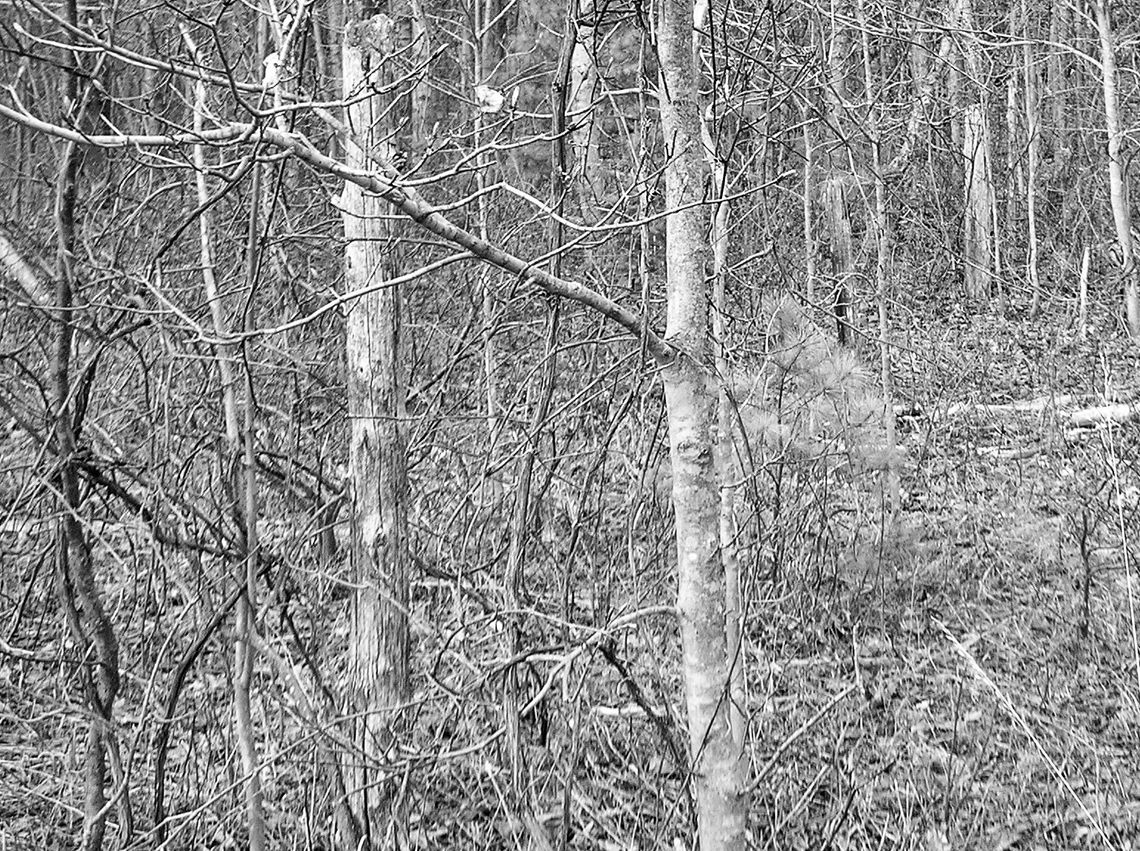This continues a series adapted from the book, “A Port Oneida Collection,” Volume 1 of the twopart set, “Oral History, Photographs, and Maps from the Sleeping Bear Region,” produced by Tom Van Zoeren in partnership with Preserve Historic Sleeping Bear. Here we take a look at the old Prause Farm and Shell Lake.
This mysterious old ghost of a farm by Shell Lake (then known as “Prouse Lake”) dates back to 1860 or so, when a Joseph (or Julius, depending on which source you believe) Prause (or Prouse) laid claim to it. Many Prauses followed here and elsewhere in Port Oneida— but we know next to nothing about the farm at that time, or the people who lived there. Mr. Prause’s preemption claim (whereby he was able to purchase the land at a minimal price by occupying and developing it) stated that he had built a 15’x16’ one-story house (which was surely a log cabin) with a pine floor and two windows.
The Prauses eventually moved a short way south to the Goffar Farm, on the south side of Lake Narada—presumably for better soil than the sand & swamp they had been trying to farm. A family named Riggs then moved in at the old Prause Farm, and the lake became known as Riggs Lake. Neighbor Laura Basch recalled that Mr. Riggs’ name was Charlie; that he used to work together with Laura’s father at thrashing bees when she was small; and that he had an old log barn (as most of the earliest pioneers had). His daughter Ruby eventually married John Schmidt of the Schmidt Farm, and the couple moved to the John & May Burfiend Farm and raised a family there (Chapter 5).
Marie (Andresen) Rader told historian Andrew White in an oral history interview that the Riggs family’s home was destroyed in a fire. This was covered in a March, 1908 Grand Traverse Herald: “Charlie Riggs lost his house and contents by fire Sunday about 2 o’clock. He did not save anything except the sewing machine and a few small articles. Could not save their clothes or bedding.” One can only imagine the details of such a situation, with small children, in that remote setting, possibly in cold and/or rainy weather. Marie’s family, the Andresens, then exchanged their nearby small farm and house for the Riggs place by Shell Lake, which had more room for a cattle operation. They then built a frame house—”a nice little house,” according to Laura Basch.
Laura told that there was no bridge over Shalda Creek at this time, so the Andresens got in and out by way of the dugway up the bluff near the Basch Road Overlook—which must have been quite a challenge at times during winter. Later they were able to use a roadway that was built up through the wetland along the east side of Lake Narada (which now serves as the foundation for a beaver dam).
Finally, the Andresens and everyone else gave up on farming the sandy plain by Shell Lake. For many years it sat vacant, and was known as “The Commons”. For some reason it was considered to be available for anyone to use—sort of an open range, naturally contained by Lake Michigan, Shalda Creek and the wetlands that feed it, and the bluff to the west. (Laura Basch tells a story about a roundup there in Chapter 14.)
During this period Shell Lake was used as a source for snail shells for farmers’ chickens, as well as a source for fish. As Laura told, “I think the reason it was “Shell Lake” was because there was a lot of shells there. My dad used to go down there in the fall of the year and get a load of shells so they had it for their chickens. They said that helped them digest their food.”
Finally, during the 1950s Harold Sweeny, a retired educator, developed Vacation Valley Campground and boys’ summer camp in the area, and operated it until the National Lakeshore was established, when he sold the property to become part of the Park.
During the 1980s when I worked as a ranger at Sleeping Bear, there were several old miniature log cabins on the old farm site, near the northwest shore of the lake. Walter Houdek, who lived up the hill on the George & Vena Olsen Farm, told me that the cabins used to house “midgets” during the camp era; however it was not clear whether the people Walter remembered were campers, staff, or somebody else. Any further information on this will be appreciated.








